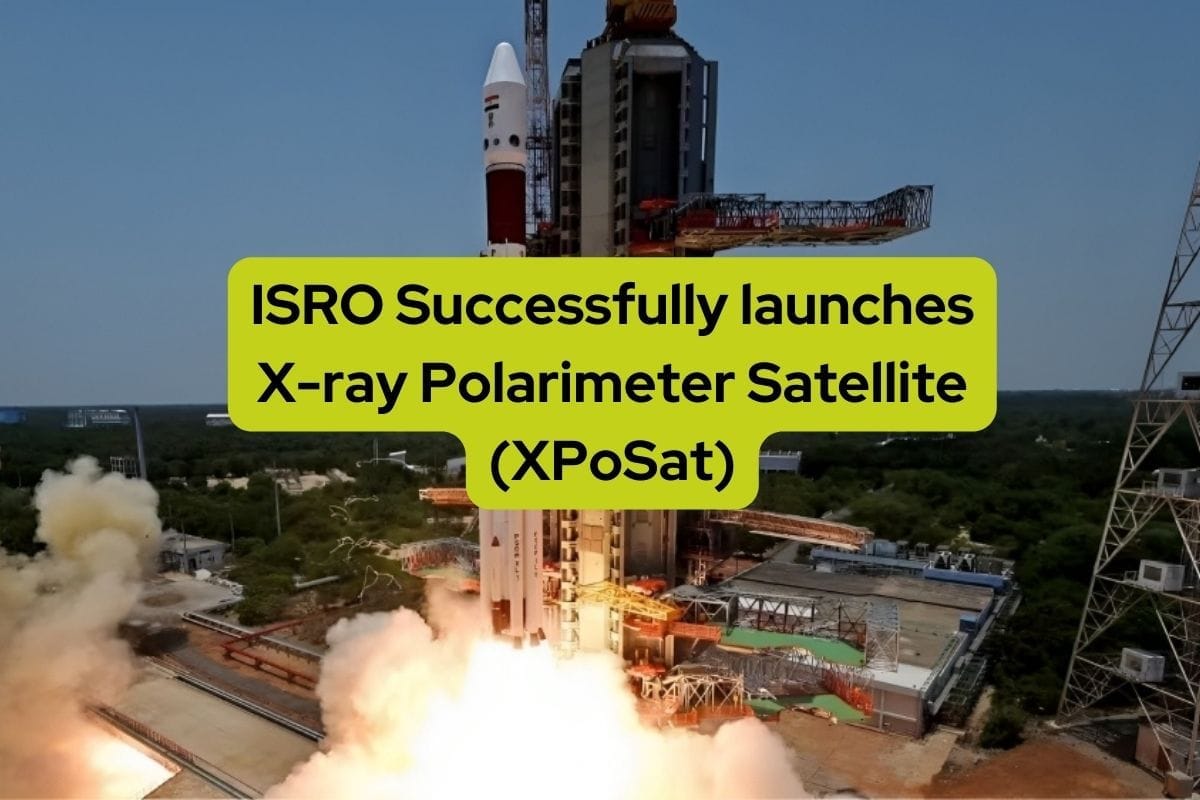
The Indian Space Research Organisation (ISRO) achieved a successful launch of the X-ray Polarimeter Satellite (XPoSat) using the Polar Satellite Launch Vehicle PSLV-C58. The satellite took off from the Satish Dhawan Space Centre in Sriharikota, Andhra Pradesh, at 9:10 AM today. Alongside XPoSat, ten other scientific payloads were also launched. This mission represents India’s inaugural dedicated scientific initiative to investigate the polarization of cosmic X-rays originating from celestial sources.
Following this launch, India has become the second country globally, after the United States, to deploy a specialized astronomy observatory with the purpose of studying black holes and neutron stars within our galaxy. The Chief of ISRO stated that XPoSat has been successfully placed into a 650 km orbit with a 6-degree inclination.
X-ray Polarimeter Satellite (XPoSat) Overview:
XPoSat, a space observatory developed by the Indian Space Research Organisation (ISRO), was launched on January 1, 2024, aboard a PSLV rocket. Its primary mission is to study the polarization of cosmic X-rays, providing insights into the nature of radiation sources, magnetic fields, and surrounding radiation. The telescope is a collaborative effort between the Raman Research Institute (RRI) and the U R Rao Satellite Centre (URSC).
Mission Objectives:
XPoSat aims to study the 50 brightest known sources in the universe, including pulsars, black hole X-ray binaries, active galactic nuclei, neutron stars, and non-thermal supernova remnants. The observatory operates in a circular low Earth orbit of 500–700 km, and its payloads observe X-ray sources during Earth’s eclipse period.
History:
The XPoSat project began in September 2017 with a grant of ₹9,50,00,000 from ISRO. The Preliminary Design Review (PDR) was completed in September 2018. The launch took place on PSLV-C58 on January 1, 2024, with precision and a negligible deviation of (±) 3 km.
Payloads:
Polarimeter Instrument in X-rays (POLIX):
POLIX, weighing 125 kg, is the primary scientific payload developed by the Raman Research Institute. It is a Thomson X-ray polarimeter measuring the degree and angle of polarization (8-30 keV).
Objectives include studying magnetic field strength, distribution, geometric anisotropies, alignment with the line of sight, and the nature of particle acceleration.
Configuration involves a collimator, central low Z scatterer, and four X-ray proportional counters.
Targets include X-ray bright accretion-powered neutron stars, accreting black holes, rotation-powered pulsars, magnetars, and active galactic nuclei.
X-ray Spectroscopy and Timing (XSPECT):
XSPECT is the secondary payload, measuring spectroscopic information and timing of soft X-rays (0.8-15 keV).
Developed by the Space Astronomy Group, URSC, it features Swept Charge Devices (SCD) for fast readouts and moderate spectral resolution.
Key objectives include understanding the long-term behavior of X-ray sources through timing studies and spectral state changes.
Launch Details:
XPoSat was launched aboard PSLV-C58 on January 1, 2024, at 9:10 am IST. The launch was precise, deviating only (±) 3 km. Following the launch, the final stage of PSLV dropped to a 350 x 350 km orbit for use as PSLV Orbital Experimental Module (POEM)-3.
Comparative Note:
XPoSat, despite being slightly heavier than NASA’s IXPE, utilized the equatorial conditions of India’s Spaceport Satish Dhawan Space Centre for launch on PSLV. IXPE, launched on a Falcon 9, required additional maneuvers due to the high altitude of Cape Canaveral.
This mission showcases ISRO’s capability in orbiting XPoSat at a higher orbit, accomplishing the mission with PSLV-DL, a version of the classic PSLV.


Leave a Reply